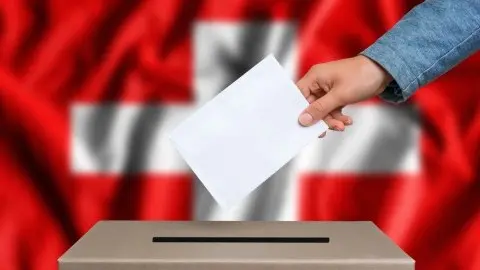ECB pre-preview: New complications on the road to taper
Even though we still have three more weeks to go before the next ECB meeting, recent developments clearly signal doing nothing and buying time in June is the best and most risk-free option
On 14 June, the ECB will hold its next monetary policy meeting.
Until now, the ECB has been very tight-lipped about the next steps for monetary policy, particularly quantitative easing (QE) beyond September this year. With a fresh update of staff projections, the ECB could have sufficient substantial input to unveil first details of the next QE steps at the June meeting or so many market participants at least say. The reality, however, could look differently. In our view, new uncertainty on the back of weaker economic data, higher oil prices and Italian politics argue in favour of buying more time.
Three main challenges for the ECB
A quick look at the three main economic challenges the ECB will be facing at the June meeting.
Soft patch vs downswing
At face value, the growth slowdown in the first quarter was mild enough to be filed away as a “soft patch” instead of a “downswing”. Economic fundamentals have also not changed over the last few months. However, soft indicators have not yet recovered, the fading eu(ro)phoria could dent further optimism, and the external environment has become a risk rather than an opportunity.
The problem ECB forecasters are currently facing is that very little new hard data will become available between now and the cut-off date of the forecasts or the June meeting. In fact, except for soft indicators for May and hard data for a couple of Eurozone countries for April, no other guidance will be available. Probably too little for the ECB to take a clear position in the soft patch versus downswing discussion. Consequently, we expect the ECB to stick to its positive take on the Eurozone recovery, but at the same time stressing increased uncertainty and the need for more evidence.
The double-edged sword called oil
The surge in oil prices since the beginning of the year is probably the single biggest problem for the ECB. Since February, oil prices have increased by more than 20%. Add the effect of the weaker euro exchange rate, oil prices denominated in euro have increased by almost 30%. As so often in the past, higher oil prices are a double-edged sword for the ECB.
On the one hand, higher oil prices could dent the recovery (according to our back-of-the-envelope estimates, higher oil prices could allow one-third of the wage increases in Germany evaporate in thin air). On the other hand, they should push up the ECB’s inflation projections. The ECB uses future prices as a technical assumption. If oil (and their respective future) prices were to stay at their current levels, headline inflation could come to 0.4 percentage points higher in 2019, from 1.4% in the March projections. At the same time, GDP growth forecast could be revised downwards by some 0.2 percentage points. All of this means that only due to changes in the technical assumptions, a benign outlook for headline inflation could quickly become a close-to-target forecast.
Normally, the ECB tends to look through energy-driven volatility in headline inflation and instead focus on core inflation measures as higher oil prices have a disinflationary impact on the recovery. This is why we expect the ECB to stress the reflation process will only be over once inflation has sustainably converged towards a target and that it would only react to possible second-round effects. Still, an upward revision in headline inflation could make a few hawks at the ECB and some market participants slightly uncomfortable.
Italian politics
Obviously, Italian politics is the new kid on the block when it comes to challenges for the ECB so don't expect ECB president Mario Draghi to comment on this. At best, he could give some very general remarks on how the ECB looks at the idea of mini-BoTs.
However, it seems clear that in a situation with new tensions in financial markets and speculations about a potential new euro crisis and maybe even some contagion in bond markets, the benefits of doing nothing clearly outweigh the potential costs of giving misleading hints.
Buying time in June looks like the most risk-free option
In our view, the unconcluded debate on soft patch versus downswing, the surge in oil prices and recent political developments in Italy clearly suggest doing nothing at the June meeting is the best and most risk-free option for the ECB. The only thing Draghi could do is to reconfirm his earlier statement that he does not expect an abrupt end to QE in September, opening the door for an extension.
The discussion behind closed doors will clearly be about how long QE should be extended for, at which amounts and whether or not an end date should be communicated, but not on the “if”. This discussion is very likely to continue until the July meeting. Then, we expect an extension of QE at a reduced amount at least until December 2018. Until then, buying time looks like the best option.
This publication has been prepared by ING solely for information purposes irrespective of a particular user's means, financial situation or investment objectives. The information does not constitute investment recommendation, and nor is it investment, legal or tax advice or an offer or solicitation to purchase or sell any financial instrument. Read more
Download
Download article
23 May 2018
In Case You Missed It: Why June’s the month to watch This bundle contains 8 Articles